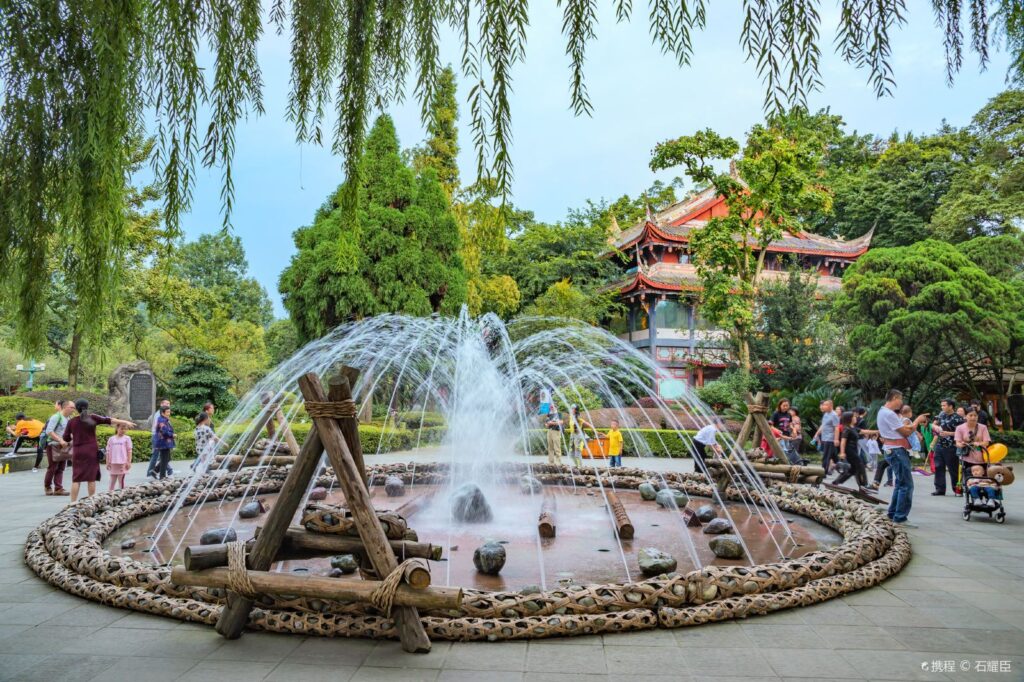Wotie, which is buried at ‘Fengqiwo’ in Neijiang, serves as the standard for dredging and the marker for the depth of riverbed maintenance each year. Its primary function is to indicate the depth of excavation. Following the principle of ‘deep dredging, low dam’ established by Li Bing in the Dujiangyan irrigation system, river channels have been cleared of accumulated silt during the dry season from ancient times to the present.
What is the appropriate depth to dig for silt? Through experience, people have found a suitable depth and buried the Wotie. Subsequent annual dredging would stop when reaching the Wotie. After dredging according to the Wotie standard, the approximately 3000-meter-long Fish Mouth water-dividing dam effectively manages the water volume of the Minjiang River, dividing it between the inner and outer rivers during droughts and floods, skillfully embodying the ‘four and six philosophy’: during the spring farming season, 60% of the water flows into the inner river, and 40% into the outer river. Conversely, during the summer and autumn flood seasons, the water flow ratio automatically reverses, with 40% entering the inner river and 60% the outer river. This is what the Dujiangyan water management principles refer to as ‘dividing the four and six, leveling floods and droughts’. There are four existing Wotie, buried in the Ming Dynasty’s Wanli years, the Qing Dynasty’s Tongzhi years, 1927, and 1994. Visitors can see replicas of these four Wotie at the fountain in the Lidai Ancient Garden, while the originals are still buried beneath the riverbed of Neijiang. The site is open all year round from 08:00 to 18:00, with specific business hours subject to the day’s opening status.

